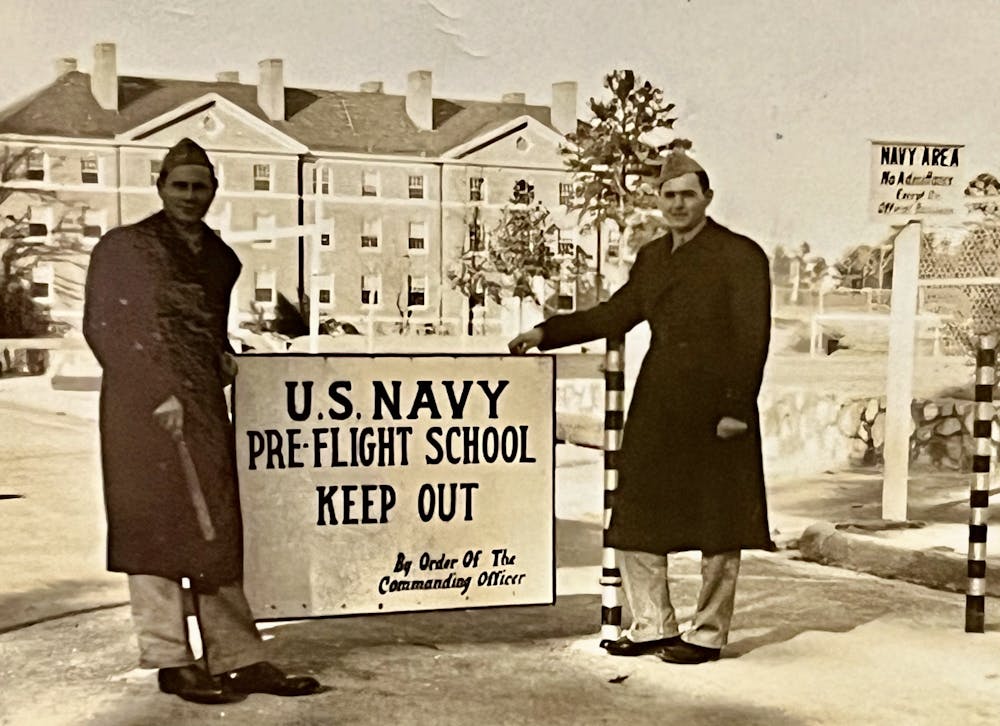An N.C. Highway Historical Marker honoring UNC's World War II U.S. Navy Pre-Flight School will be placed on the corner of Franklin Street and Raleigh Street on Sept. 30 to recognize the war efforts made by UNC and the Town of Chapel Hill.
Parker Huitt, the grandson of U.S. Navy cadet Powell Huitt, who attended UNC's pre-flight school, said he put in a request for the highway marker in Chapel Hill.
“Four-plus years ago, I did some research, and I submitted an application to the North Carolina Highway Historical Marker Program, which is a part of the North Carolina Department of Cultural Resources," Huitt said.
Nicholas Graham, a University archivist, said the U.S. government commissioned the pre-flight school in 1942, months after the United States joined World War II. Four other U.S. Navy pre-flight schools were established in the country around the same time. Compared to the other stations, UNC housed and trained the most cadets — roughly 20,000.
Graham said the program was a six-week intensive course to train cadets and prepare them for flight.
"It was a lot of physical conditioning, and also beginning to learn what they would need in order to become Navy pilots," he said.
The training was physical and prepared cadets for all possible outcomes, which included training them in skills beyond aviation, Huitt said.
This flight school had a tremendous impact for both UNC and Chapel Hill, Graham said. During the war, UNC saw a decrease in enrollment numbers, and establishing the pre-flight school brought in large sums of people.
The federal government decided to establish a pre-flight school at UNC due to its large campus and many resources. Huitt said some of the resources UNC provided to the pre-flight school were large dining halls, solid infrastructure, many open fields and extensive wooded areas where cadets could train their aviation skills. He added that UNC constructed additional buildings after the school was established.



